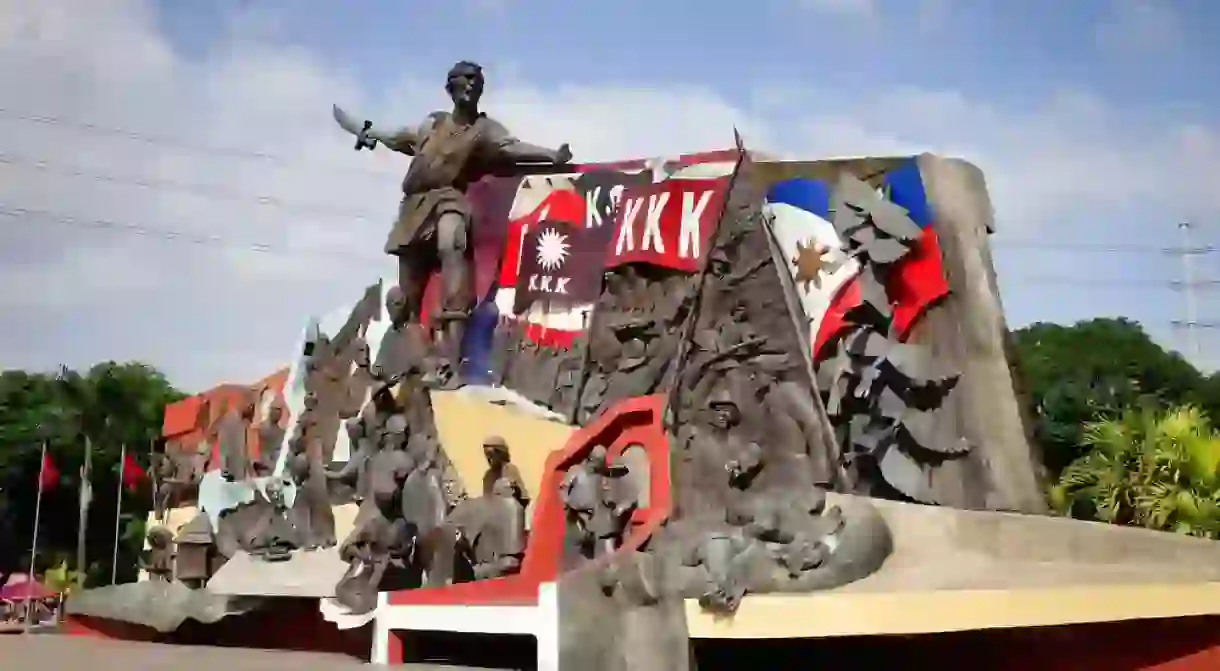The History of The Philippine Revolution

The Philippine Revolution is one of the most important events in the history of the Philippines, awakening a proud sense of nationalism for generations of Filipinos to come. In a period of heavy struggle and conflict, Filipinos of different backgrounds united with a common goal: to resist colonialism.
Planning a trip to the Philippines? To ensure you have an unforgettable trip, book the best tours of the Philippines here >>>
The revolution against Spain was sparked in 1896 after Spanish authorities discovered the “Katipunan,” a Filipino revolutionary society plotting against their colonisers. It ended in 1902, when Spain lost and ceded sovereignty of the Philippines to the United States.
The Katipunan: the secret organization that initiated the revolt
Andres Bonifacio was the Supreme of the Katipunan or, as it was also known, Kataas-taasan, Kagalang-galang Katipunan ng mga Anak ng Bayan (Highest and Most Venerated Association of the Sons and Daughters of the Land). The organization drew inspiration from Dr. Jose Rizal, whose literary works, particularly Noli Me Tangere and El Filibusterismo, exposed the cruelties of the Spanish colonisers. Before Katipunan was established, both Bonifacio and Rizal were part of ‘La Liga Filipina’ – a progressive organization initiated by Rizal that sought peaceful reforms.
After Rizal’s arrest and deportation to Dapitan, La Liga Filipina dissolved. This was later replaced by a call for aggressive reforms, put forward and favored by Bonifacio. Upon hearing of Rizal’s arrest, Bonifacio and his fellows founded the Katipunan. The anti-colonial secret organization eventually attracted people from lower and middle classes across the country, enjoining them in an armed revolt against Spain.
Rizal, the country’s national hero, refused to participate. He believed timing wasn’t on their side and the nation was still unprepared. In spite of his friend’s reservations, Bonifacio and his fellow Katipuneros continued with their plan. Yet on August 1896, a Spanish friar found them out.
A series of bloody revolts
After the discovery of the Katipunan, Spanish authorities made several arrests to identify their members. Bonifacio and his fellows were planning a nationwide revolt. This led to an event called the ‘Cry of Pugad Lawin’, where revolutionaries took part in a mass tearing of cedulas (community tax certificates), symbolizing their fight against Spain.
Bonifacio simultaneously planned an attack on Manila. However they were caught off guard as, though the revolutionaries were greater in number, the Spanish authorities were heavily armed.
According to historical accounts, Bonifacio continued with his plan despite the failure in his first attempt. The revolt flared up in the surrounding provinces, including Central Luzon, San Juan del Monte and Southern Tagalog (which is why this is also known as the Tagalog War).
After several unsuccessful revolts, rebels in Cavite finally had a taste of victory. Under Emilio Aguinaldo (mayor of Cavite El Viejo) and Mariano Alvarez (Bonifacio’s uncle), the Philippine Revolution was in full swing.
The revolution dragged down the name of Rizal. He was accused of being associated with the secret militant society. Charged with sedition, conspiracy and rebellion, Rizal was sentenced to death by firing squad.
Internal struggles, conflicts, and a surprising turn of events
Alongside the Spanish authorities, Katipuneros were soon fighting amongst themselves. Rivalries emerged between commanders and territories, creating big rifts in the association. The Katipunan divided into two councils, namely the Magdiwang and Magdalo – that is, those who favoured Aguinaldo and those who favoured Bonifacio.
To settle the leadership dispute, the Tejeros Convention was established. This assembly of officials was intended to unite the two factions and elect officers for the revolutionary government. After a makeshift election, Bonifacio lost to Aguinaldo and leadership was turned over to him.
Bonifacio was given the role of Director of the Interior, but his qualifications were questioned. Under this further scrutiny he left the assembly – Aguinaldo took oath as President the following day.
A rival government
Bonifacio soon set out to Naic, Cavite, where he established a rival government against Aguinaldo. Newly recognised as the leader of the revolution, he issued a coup d’etat against Aguinaldo’s government. Upon learning this, Aguinaldo ordered the official arrest of Bonifacio.
Bonifacio was captured and found guilty of sedition and treason by the War Council. They were soon executed near Maragondon.
Aguinaldo and his fellows soon established the Republic of Biak-na-Bato and drafted the first constitution.
They came up with a pact that called for an end to the revolution, which was positively favored by the Spanish Governor-General. The pact’s agenda included: the surrender of weapons to revolutionaries, amnesty, exile for leaders, and payment to the revolutionaries worth $400,000 USD.
While the Spanish kept their word, other revolutionary generals took arms – the Philippines was still not independent.
The arrival of the Americans and the Declaration of Independence

April 1898 marked the second phase of the Philippine Revolution. After a US Navy warship exploded and sunk in Havana harbor, the Americans declared a war against Spain known as the Spanish-American War.
The US Navy’s Asiatic Squadron, led by Commodore George Dewey, sailed to Manila and defeated the Spanish Navy. In just a few hours all Spanish ships were destroyed and the US gained control of the Philippine capital.
Meanwhile, Aguinaldo became friendly with the United States. He met with a US consul who advised him to cooperate with the Americans. And so, from his exile in Hong Kong, Bonifacio eventually returned to the Philippines and resumed the attacks against the Spanish authorities.
And on June 12, 1898, Aguinaldo declared the country’s independence and the birth of the Philippine Republic. From his balcony in his house in Kawit, Cavite, the Philippine flag was unfurled. The Philippines’ National Anthem, “Lupang Hinirang” was first heard by the Filipino people.
It was December of that year when the Spanish government ceded the Philippines to the United States through the Treaty of Paris. While it ended the Spanish-American War, the Americans took possession of the Philippines. Independence had not really been achieved.












